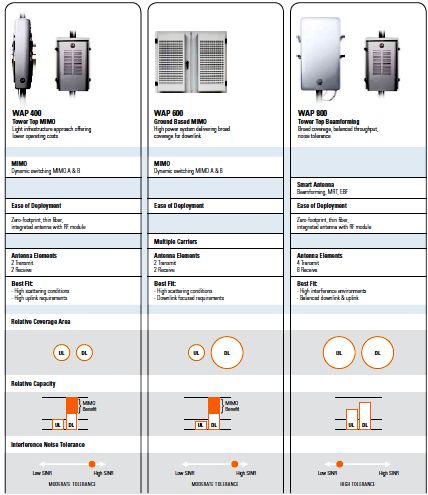Sprint today rolled out WiMAX services in Chicago, Dallas-Ft. Worth, Charlotte, Raleigh, Durham, Chapel Hill and Cary, N.C., and Greensboro, Winston-Salem and High Point, N.C.. The buildout is being handled by Clearwire, based in Kirkland, Wash., of which Sprint is 51 percent owner.
Sprint customers can use the external 3G/4G USB Modem U300 which offers access to both 3G and WiMAX networks. Customers can benefit from a 4G promotion allowing them to get the dual-mode device for free after a $50 mail-in rebate with a two-year agreement. Sprint is currently offering new 4G/3G data plans for $69.99 monthly with unlimited 4G and unlimited 3G on the Sprint network.
Sprint today also unveiled the Dell Inspiron Mini 10, the first netbook available from Sprint. The Atom-powered Netbook is now available at select Sprint Stores throughout the Twin Cities for just $199.99 with activation on a Sprint Mobile Broadband plan and a two-year service agreement, after a $100 mail-in rebate. It features an embedded EV-DO data card — but no WiMAX.
It follows moves by AT&T in April and Verizon in May to offer netbooks for as low as $49.99.
Samsung’s Moment is also coming to Sprint. It features a slide-out QWERTY keyboard, AMOLED screen and Android inside. It costs $179.99 after rebates (with a two-year commitment).
Motorola says it has shipped 10,000 Mobile WiMAX standard base stations, a 40 percent compound annual growth rate since Motorola’s first WiMAX access points were shipped in 2007. In September, 2009, Motorola announced it has shipped over one million WiMAX CPE device.
There are now 4 million worldwide BWA/WiMAX subscribers, says Maravedis, with 45 new devices obtained WiMAX Forum certification from June to September 2009, including 18 notebooks, 4 cards, 12 USB dongles, and 3 chipsets, among other devices.
Motorola’s WiMAX portfolio includes a variety of solutions with different coverage and capacity. In the licensed 2.3GHz, 2.5GHz, and 3.5GHz bands, Motorola is currently shipping include the WAP 400 with 2×2 antenna technology and the WAP 450 – a higher power 2×2 unit. In addition, the WAP 800 in the 3.5GHz has the versatility to support both coverage and capacity models with 4×8 beam-forming antenna technology.
The WAP 800 uses antenna arrays to control the direction and shape of the radiation pattern — steering and forming the beam to provide an optimal radiation pattern focused in the direction
The recently announced 4×4 WAP 650, which the company says is an easy field upgrade from the WAP 450, and offers operators 30 percent reduction in total cost of ownership compared to average 2×2 base stations, by using more MIMO antennas for better coverage.
Each new generation of the WAP product line is designed with improved energy efficiency. Motorola says there is a more than 100 percent relative energy efficiency improvement from the first to second generation radio frequency (RF) unit, enabling cost-effective solar and wind-powered installations.
Motorola claims more than 35 WiMAX contracts in every region of the world, in 2.3 GHz, 2.5 GHz, and 3.5 GHz, including a recently announced deal with Imagine in Ireland.
Clearwire International, and Taiwan’s Tatung InfoComm and VMAX have for the first time demonstrated mobile WiMax global roaming, the WiMax Forum said on Monday.
The demonstration was done at the WiMax Forum Member Conference in Taipei. It used a USB (Universal Serial Bus) modem, a username and password from Clearwire to gain access to both Tatung InfoComm’s and VMAX’s respective WiMax networks in Taiwan. The operators talked to each other via Aicent, a third-party roaming exchange provider. Other companies participating in the demos include Samsung, Futureinfonet, Alcatel-Lucent and Bridgewater Systems.
Unlike its cellular rivals, WiMax does not have roaming specified in the IEEE standards, explains Clearwire’s International’s president Barry West in this Light Reading video. West wants WiMax to get to the “same position” as GSM roaming, whereby any GSM device can be used on any GSM network in the world.
Clearwire’s international roaming deal means that someone using Sprint’s USB WiMAX modem, for example, could seamlessly roam to other WiMAX networks, explains Unstrung. Clearwire has also signed agreements with WiMAX operators UQ Communications of Japan and Yota of Russia for WiMAX roaming between the operators.
WiMAX Roaming.org, under the auspices of WiMAX Forum, provides a forum for working out roaming standards. Roaming may also be applied when Comcast or Time Warner WiMAX users in the United States venture into other regions that are served by other providers such as Clear or Sprint.

















No comments:
Post a Comment